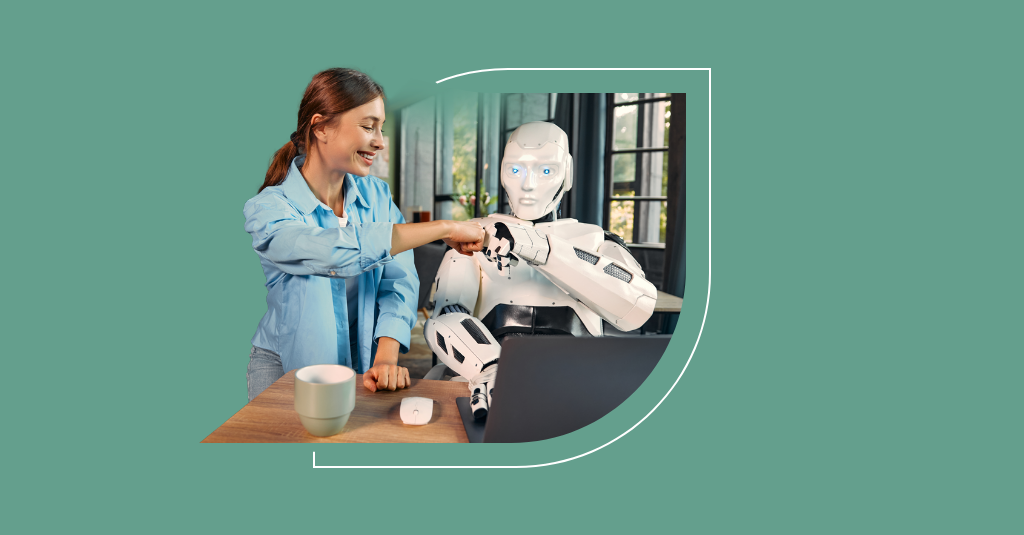Getting Started with Continual Improvement
Continual improvement is part of the service value ecosystem that improves service delivery and customer experience (CX) and is arguably one of the most important practices of any service organization. The Continual Improvement ITIL 4 Practice Guide (2020) defines continual improvement as follows:
“The purpose of the continual improvement practice is to align the organization’s practices and services with changing business needs through the ongoing improvement of products, services, and practices, or any element involved in the management of products and services.”
Sounds simple right? However, all too often, IT service management (ITSM) teams look at continual improvement as either a project (it’s not) or take on too much, opting for a ‘big bang’ approach, resulting in feeling overwhelmed and nothing ever really improving. Whereas the correct way to approach continual improvement is to look at making small, achievable improvements so that you to continue to make things better (and better – it’s continual, see?) over time.
Back in 2021, I wrote a blog featuring 5 tips for adopting continual improvement, but I still think many organizations are struggling to see how to make continual improvement a standard day-to-day practice on the service desk. So, to help get you started or to improve what you already have in place (see, we’re improving already), in this blog, I provide additional guidance on how to embed continual improvement in your day-to-day activities successfully.
Here @Joe_the_IT_Guy provides guidance on how to embed continual improvement in your day-to-day activities successfully. #ITSM #ServiceDesk #ITIL4 Share on XUse the force
Or, in our case, the ITIL guiding principles. My good friend, Stuart Rance, has already written about them here, but the ‘nutshell’ version is that the guiding principles are in place to provide practical ITIL guidance, support good decision-making, and encourage improvement. There are seven guiding principles in ITIL 4:
- Focus on value.
- Start where you are.
- Progress iteratively with feedback.
- Collaborate and promote visibility.
- Think and work holistically.
- Keep it simple and practical.
- Optimize and automate.
I use these guiding principles below to help explain how best to tackle the opportunity for continual improvement.
Focus on value
Or, in other words – look at what is causing the business pain. It could be outdated hardware or software (aka technical debt), or perhaps it could be a problematic process, for example, the time it takes to log a fault with the service desk. Why is ‘focus on value’ the first principle? I like to think it’s a variation of the eat the frog concept. The idea is to identify one challenging task (the frog) and complete it first thing in the morning (eating it). To put it simply, eating the frog essentially means identifying your most challenging task of the day and completing it before you do any other work. By tackling something that’s genuinely causing pain to the business, you’re more likely to be seen as adding value and the more frogs you eat, the more value you add.
Eat a frog and succeed with continual improvement… or something like that. Check out this post from @Joe_the_IT_Guy #ITSM #ServiceDesk #ITIL4 Share on XStart where you are
Stop getting distracted by the latest shiny new thing and look and build upon what you already have. A real-life example could be your problem management practice. All too often, people focus on the reactive side of problem management, log a few problems and known errors and think the job is done. Then they move on to the next practice wondering why problem management hasn’t been the game changer they thought it would be.
Instead, take the time to look at your current process (reactive problem management) and build on it to include proactive problem management. Proactive activities could include working with the service desk and tech support teams to identify trends and address them to reduce or prevent future incidents. Other activities could include having a problem management agenda item at service review meetings, asking the business if anything is worrying them or doing something similar for technical teams. By asking your support teams what bothers them and what in our infrastructure keeps them up at night, you might not be able to fix everything all at once, but by logging them, they get visibility, and they become present on everyone’s radar.
Wondering why problem management hasn’t been the game changer you thought it would be? Check out this blog from @Joe_the_IT_Guy #ITSM #ServiceDesk #ITIL4 Share on XProgress iteratively with feedback
In other words, use feedback loops to shorten and amplify improvement initiatives. This is very similar to the DevOps second way, which is about building a minimum viable product (MVP) and improving it based on customer feedback. Start with an idea, a need, or a key deliverable and create the first version with just enough features to deliver some value. Allow the customer to test it and get their feedback. This first attempt is your MVP, and now you can measure how customers respond and how it behaves in real-life conditions so we can learn from it and improve it with each iteration by adding new features or removing errors.
Collaborate and promote visibility
Keep things on track using a Kanban board – an agile tool designed to help maximize efficiency and flow by visualizing work and limiting work-in-progress (WIP). Each Kanban board is a visual representation of a work stream, and they lend themselves especially well to the incident, request, and change practices. You could use Kanban boards to keep track of activities associated with new starters or changes that must be reviewed and scheduled at the Change Advisory Board (CAB). By having a visual reminder of high-profile tasks, you increase visibility, colleagues have a prompt to move them to the next stage, and nothing is missed or forgotten.
Use feedback loops to shorten and amplify improvement initiatives, says @Joe_the_IT_Guy. Check out his other advice for continual improvement here. #ITSM #ServiceDesk #ITIL4 Share on XThink and work holistically
Another way to embed continual improvement into your day-to-day offering is to look at opportunities for enterprise ITSM or extending service management processes and methods of working into other business areas. Look for improvement opportunities; if teams use manual, paper-based processes, that’s your audience. You’re looking for teams with process-driven workflows that depend on triggers, inputs, and outputs. This type of setup lends itself to enterprise service management (ESM). For example, your request management practice could be the basis for a simple HR onboarding process and your incident management practice could be the basis for reporting faults to your maintenance department.
Keep it simple and practical
Just because a form can have 20 million options doesn’t mean you have to use them. When setting up forms in your ITSM tool, design them, so they are easy to engage with and use. When creating your incident form, ensure it’s linked to the user’s account so that the person’s name and contact details are already prepopulated. Make the description field a free text field so the user can give a brief outline of their issue, don’t make them use complicated drop-down menus that are several levels deep to have them guess at the related service.
When designing your change enablement practice, use CAB wisely. Don’t send every change to the CAB unless you want some very frustrated support teams. Instead, build in standard changes and delegated authority to increase flow and reduce blockers. If you keep your process simple, people will be more likely to engage with them, leading to more positive engagements and improvements over time.
Top tips from @Joe_the_IT_Guy in this blog, including not sending every change to the CAB & not having forms with too many options. Read more here. #ITSM #ServiceDesk #ITIL4 Share on XOptimize and automate
Lean into automation to free your people for value-add tasks. If you don’t have one already, consider adding a self-service module to your service desk to make it more customer-focused (but of course, check it’s what the business wants first). By mirroring what customers experience at home, for example ordering from Amazon, you improve customer experience. Self-service can enable end users to log incidents and requests conveniently and receive status updates by app notification (as an example) rather than calling the service desk, navigating an IVR, and then waiting in a queue.
Continual improvement doesn’t have to be daunting. Just take it one step at a time and make small changes – @Joe_the_IT_Guy #ITSM #ServiceDesk #ITIL4 Share on XMarginal gains for maximum results
Continual improvement doesn’t have to be daunting. Just take it one step at a time and make small changes. Enter the concept of marginal gains. Marginal gains is the theory that improving and optimizing your performance by a small amount across several different areas will lead to more significant, noticeable improvements overall. Keep moving forward, and everything will start to come together. Some examples of marginal gains are:
- Service desk wikis as a starting point for a more formal knowledge management system for technical information
- Having a FAQ section to answer the most commonly asked questions asked by end users
- Change templates to streamline the change logging and approval process
- Prioritization models for incidents and service requests to speed up troubleshooting and approval activities
- Creating a dedicated area for installing software, so techs don’t have to remember lots of different locations
- Self-service account management, for example, account unlocks and password resets
- Automating alerts so that support teams are notified of system faults and errors in real-time
- Creating runbooks to capture routine operating procedures for sysadmins and technical teams
- Creating a known error database to provide problem workarounds to your service desk so they can help users at the first point of contact.
That’s my take on introducing continual improvement into your day-to-day service offering. Would you add anything else? Please let me know.
Did you find this interesting?Share it with others:
Did you find this interesting? Share it with others:








